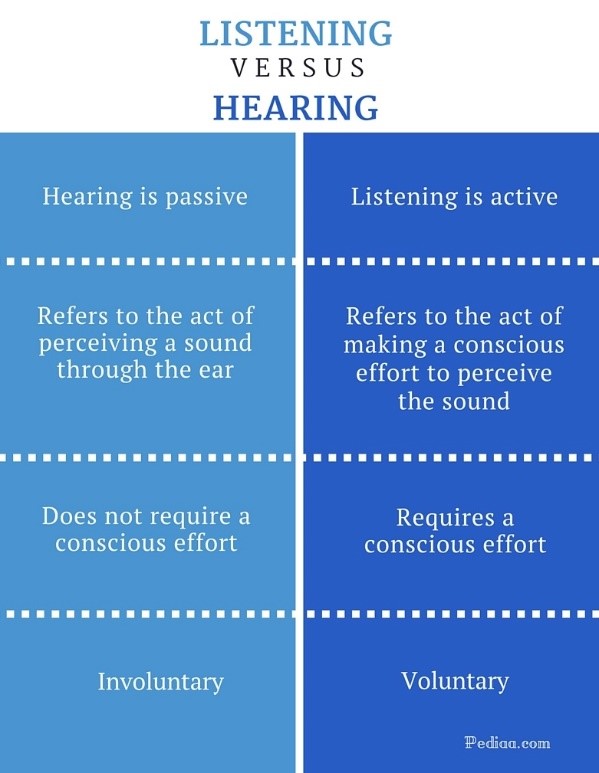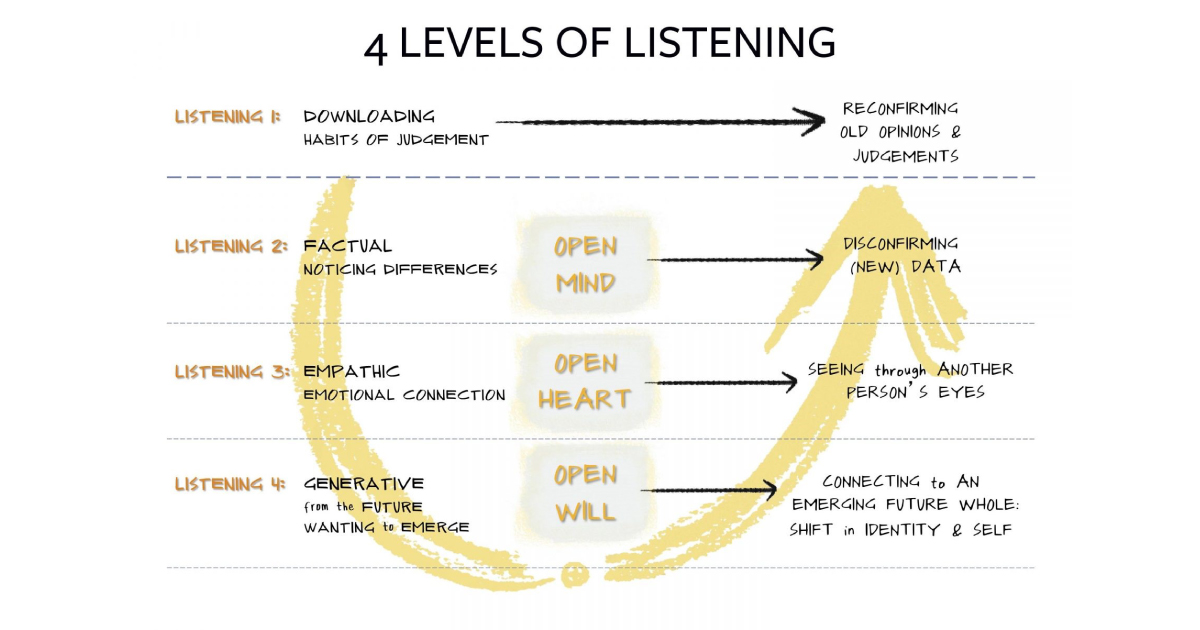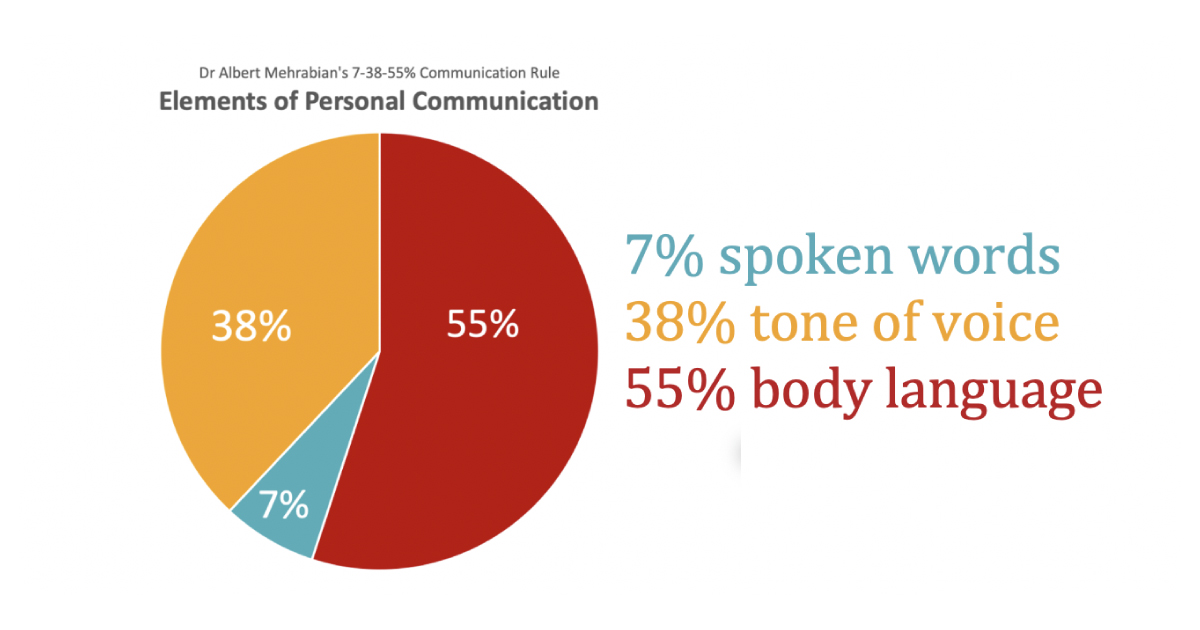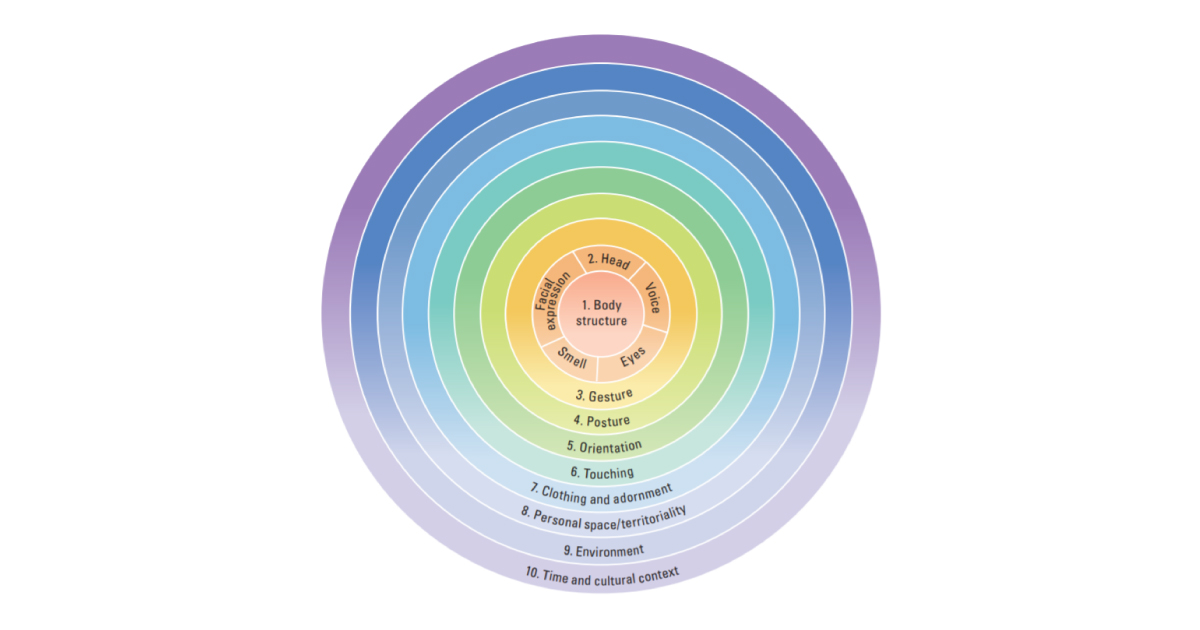Why listening and non-verbal communication matter? Referring to theories and sharing the sources of knowledge in active listening and nonverbal communication skills
Being able to show active listening skills and adequate non-verbal communication is a vital skill. Being able to explain it meaningfully and providing space for developing it, is giving a gift of this vital skill.

What is the main job of the trainer or educator? Just by analyzing the words “trainer” or “educator”, it is easy to deduce that the main job is to train or educate people. Very often it is associated with giving input, sharing theories, and leading activities or exercises, and as trainers and educators, this is what we have been trained to do. What does not typically come to mind, however, is the part about listening. Listening to the needs of the participants, listening to their reflections, listening to their comments that might be crucial for the process.
Three years ago, I started studying supervision and coaching, and one of the main characteristics of the process was active listening. Our teachers once said: “When you truly listen, you connect to the person. You allow the person to realize what is important for them at that particular moment. When you truly listen, you allow new insights to be born.” After three years of intensive studies and practice, I have realized that knowing what active listening and non-verbal communication is, and applying it adequately, is much harder than it initially seems. In this article, I will try to illustrate the importance of active listening and non-verbal communication and share various theories and exercises that might lead to a better understanding and application of these skills.
Purpose of listening
Listening has become a lost art. Some psychologists call it one of the most needed skills of the 21st century. In the last century, we became too focused on ourselves, mainly because of consumerism, comparisons, and social networks. This focus on “I” has also affected the way we listen, or more correctly – not listen. It is not a rare situation – when two people are in dialogue, they both pretend to listen to the other, but in reality, they are thinking “What is there about me? In my experience …. my opinion is …” There is a genuine lack of good listening. Moreover, many have become so self-obsessed that they miss all forms of non-verbal communication.
Professor of Medicine, Rachel Naomi Remen, said “The most basic and powerful way to connect to another person is to listen. Just listen. Perhaps the most important thing we ever give each other is our attention.”
Before reading the following paragraph, please answer the question yourself:
- Remember the last three conversations you had. What was your purpose for listening in each of these conversations?
Listening, as a process, has several purposes, and the purpose of listening will depend on the situation and the nature of the communication. The six main purposes of listening are:
- To fully focus on the messages being communicated, avoiding distractions and preconceptions;
- To gain a full and accurate understanding of the speaker’s point of view and opinion;
- To observe the non-verbal signals accompanying what is being said to enhance better understanding;
- To show interest, respect and full concentration;
- To encourage the speaker to communicate fully, openly and honestly; and
- To arrive at a shared and agreed understanding and acceptance of both points of view.
Now think back to those three previous conversations, which of these purposes did you manage to achieve?
In training courses, there are some differences in the purposes of listening. It is not only one person, but there are many people to be listened to, so this means that the purpose is to listen to all participants. Of course, many times it is not realistic because of time constraints, but with your intention, and non-verbal communication, it is possible to show the participants that all opinions and ideas are welcome.
Another important purpose for the trainer is to encourage participants to listen to each other and pay attention to their own and other people’s non-verbal communication. Group work in non-formal education is one of the most common methods of work-sharing, creating, collaborating, discussing – all of these processes necessitate the ability to listen to each other. Some years ago, I started to observe group processes more carefully, paying attention specifically to the way participants listen to each other and their non-verbal communication clues. My observations came to the shocking conclusions that there is a great lack of listening skills or the ability to sense another person’s non-verbal communication clues. The worst of all the groups I observed were teachers in the 50 – 70-year-old range. Often they were talking at the same time, interrupting each other, or not paying attention to what the other person was saying (this is only an objective observation). Youth who belonged to NGOs, youth clubs, or who had experience in participating in youth activities and projects, showed a greater ability to listen to each other. They demonstrated interest through non-verbal cues, they allowed the speaker to finish their thoughts, they referred to each other’s ideas or opinions often, and they asked questions for clarification. Clearly, experience in non-formal education helps in developing listening skills.
Based on these observations I do one of the following things:
- Remind people that there is a difference between hearing and listening, especially in group work. I often ask participants to name the difference themselves and how this can affect their group process.
- After the group tasks, I provide space for reflection where one of the questions is related to listening to each other, for example; “Rate, individually, from 1 – 5, how well we listened to each other? What worked? What should be improved?”

4 Levels of Listening
Have you ever noticed that there are different levels of listening? Try to remember a situation when somebody listened to you and you did not feel understood, but instead, you felt judged and therefore did not want to elaborate more. Try to remember a situation when you felt that the person listening to you had an open mind and an open heart. There is a great theory that might explain why and how these differences happen?
The 4 Levels of Listening are a part of “Theory U” created by Otto Scharmer. He designed this model by observing many people in organizations worldwide. The theory suggests that many conflicts arise due to lack of listening and therefore lack of understanding of the situation at hand.

Downloading
This is the most basic and habitual form of listening. It is very direct, and usually only occurs when the individual is familiar with what they are hearing/being told and are therefore only listening to confirm what they already know, or their current opinion, which is likely not to change. “Yeah, I know that already.” This type of listening is called “downloading”—listening to reconfirm habitual judgments. When you are in a situation where everything that happens confirms what you already know, you are listening by downloading.
Factual Listening
The next stage of listening is factual listening which involves listening with an entirely open mind and without any assumptions or prior judgments. Individuals applying factual listening are attentive to new ideas and data and are accepting of any differences from what they already know. As a listener, you switch off your inner voice of judgment, and instead listen to the voices right in front of you. You focus on what differs from what you already know.
Empathic Listening
Empathic Listening requires a deeper level of listening and requires emotional intelligence. This is the ability to truly connect with the individual who is being listened to, and to see the world, the situation or the subject as they do, through their eyes. This type of listening provides the listener with an emotional connection to the speaker. But, to feel how another feels, we have to have an open heart. Only an open heart gives us the empathic capacity to connect directly with another person from within. When that happens, we feel a profound switch as we enter a new territory in the relationship; we forget about our own agenda and begin to see how the world appears through someone else’s eyes.
Generative Listening
This is the highest, most informative level of listening, and is a very important skill for leaders to learn. It requires the individual to gain a connection with the best future that they can; an emerging and developing future, or possible futures. This level of listening requires us to access not only our open heart but also our open will—our capacity to connect to the highest future possibility that can emerge. By generatively listening, we transcend looking for information to validate or challenge our ideas or empathizing with the speaker and instead, we find something new that is created because you are listening.
Being aware of non-verbal communication in oneself and others
Non-verbal communication can be a very powerful tool in understanding ourselves and others. It can transmit messages and share much more information than words do. Professor of psychology, Albert Mehrabian, studied the importance of non-verbal communications in the 1970s. Through his research, he discovered that the use of non-verbal communication was stronger than first assumed. He formulated the 7-38-55% communication rule which is still widely used today. These numbers show how much meaning is communicated through verbal and non-verbal communication methods.

If a speaker’s words and body language differ, listeners are more likely to believe the non-verbal communication of the speaker, not his words. Mehrabian stated that “non-verbal elements are particularly important for communicating feelings and attitudes, especially when they are incongruent: if words and body language disagree, one tends to believe the body language.”
What does non-verbal communication do for us that verbal communication cannot do? We use non-verbal communication to:
- replace verbal communication in situations where it may be impossible or inappropriate to talk;
- complement verbal communication, thereby enhancing the overall message;
- contradict, either intentionally or unintentionally, what is said;
- regulate conversation by helping to mark speech turns;
- express emotions and interpersonal attitudes; and
- negotiate relationships in respect of, for instance, dominance, control and liking.
Are non-verbal communication and body language the same?
No, they are not. Body language involves the physical behavior of our bodies — eye contact, posture, gesture, orientation and so forth — while non-verbal communication embraces all body language communication, and also includes clothing and adornment, environmental factors and even how we use time.
The model below represents the 10 parts of non-verbal communication. When you first look at this model, there might seem that there are many forms of non-verbal communication that impact our daily life that we are not even aware of. Before reading about each part, think about what they mean to you, and how you understand each part of the model? Which of these parts are you most aware of? Which of these parts are you less aware of?

Body structure: this is one of the elements that are very often excluded from other theories. Not only do our body movements express some meaning in communication, but also the body itself. According to research, for some people, some bodies represent warmth, closeness, or attractiveness while other bodies may represent roughness, higher status, or coldness. (Source: Etcoff, Nancy 2000, Survival of the prettiest, Anchor, New York.).
Head including facial expression, voice, eyes, smell. Facial expressions are vital to social communication between humans, they express the emotional tone of the message. Unlike some other forms of non-verbal communication, facial expressions are universal. The facial expressions for happiness, sadness, anger, surprise, fear, and disgust are the same across cultures.
Voice. It is not just what you say, it is how you say it. When you speak, other people “read” your voice in addition to listening to your words. You also listen to others and subconsciously know that their voice may communicate a different message than their words. Things to pay attention to voice include timing and pace, loudness, and tone.
Eyes. Since the visual sense is dominant for most people, eye contact is an especially important type of non-verbal communication. The way you look at someone can communicate many things, including interest, affection, hostility, disgust, or attraction. Eye contact is also important in maintaining the flow of the conversation and for assessing the other person’s interest and response.
Smell. In western societies, the smell is a taboo topic because it is bound up with norms of cleanliness, health and attractiveness. However, through smell, people can communicate connection – with one person it can be closer and more accepting and for another restrained.
Gesture. Gestures are movements of the body, especially the hands or arms, that express an idea or emotion. There is cultural variation in the repertoire, frequency and expressive range of gestures — some cultures are physically more expressive, others are much less. Gestures can create a more dynamic type of communication.
Posture and orientation. In more simple words; body posture and movement. Posture can convey a wealth of information about how a person is feeling, relating to the speaker including if they agree or disagree. Posture can also signal a lot about personality characteristics, such as whether a person is confident, open, shy, or humble.
Touching. Touch is recognized as a basic human need but the degree to which individuals touch one another varies considerably from culture to culture, as well as within cultures. Completely different messages can be shared by a weak handshake, a warm hug, a patronizing pat on the head, or a controlling grip on the arm.
Clothing and adornment. The way we dress and adorn ourselves tells others whether we belong to a particular group, or which group or status we imitate out of admiration. Our clothing can also carry messages about wealth, rank, or class.
Personal space and territoriality. Like animals, human beings exist within an invisible ‘bubble’ of personal space or territory, in which we feel secure. We can feel anxious if others invade this space; for example, by standing too close or by touching us. The four zones identified are:
- The intimate: within this zone, we will be comfortable only with people we like and know very well, for example, family members and lovers.
- The personal: within this zone, we will also be comfortable with people we know quite well, for example, friends and close colleagues.
- The social–consultative: within this zone, we will also be comfortable with people we know only moderately well, for example, work colleagues in a meeting.
- The public: within this zone, we will also be comfortable with people we know only slightly or not at all, for example, strangers in public places.
The size of each person’s space or territory can vary greatly depending on social, cultural, or even personal norms. Some people require a lot more “personal” space than others, while in some countries there is almost no concept of “public” space.
Environment. The physical environment in which we find ourselves can itself be a powerful mode of communication. If we think about a training course, as a trainer we should ask ourselves which environment does a particular participant like to be in, where do they situate themselves in the room (e.g.: the middle or at the side), and how do they create the space around them (e.g.: clean and organized or chaotic and messy)?
Time and cultural context. To understand the nuances of non-verbal communication across cultures, it is important to know the differences between “high-context” and “low-context” cultures. “High-context” cultures rely heavily on non-verbal communication, using elements such as the closeness of their relationships, strict social hierarchies and deep cultural knowledge to convey meaning. In contrast, “low-context” cultures depend largely on words themselves. In “low-context” cultures, communication tends to be more direct, relationships tend to begin and end quickly, and hierarchies are more relaxed.
How does this apply to be a trainer?
- The trainer is a role model for participants to have an example of how to listen and model the supportive use of non-verbal communication;
- The trainer can “read” a lot of information about participants, and from the group as a whole, just by actively listening and paying attention to their non-verbal communication;
- The best way to develop active listening and non-verbal communication is by practicing it and reflecting on it, non-formal education provides a great space for this type of learning; and
- Referring to theories and sources of knowledge in the topic of active listening and non-verbal communication can be meaningful and explanatory to many participants.
Exercises
Title: Empathetic listening in practice
Instructions.
- Divide participants into pairs and ask them to decide who will be participantA and who will be participant B.
- Participant A has to think about a challenging situation from life (e.g.: youth work, trainer’s work).
- Participant A shares their challenging situation with participant B for 10 mins.
- The main task of participant B is to listen empathetically. The task is not to solve the problem, to give suggestions, or to criticize, instead participant B should only listen with an intention of support and understanding. Participant B can ask questions to clarify.
- After 10 mins, switch roles.
- After B had his 10 mins to share the story, invite everyone back to the circle for their reflections.
- Start with the question: “How was it?”
- Ask all participants to think about the time when they were in the role of sharing their challenging situation. “What did the other person do that was helpful for you to share and to open up?” Typically, people mention things like; they were totally focused, showed an interest, looked me in the eyes, asked questions, etc. If the answer seems too broad, try to narrow it down, for example, what exactly did the other person do that made you feel that they were interested? How exactly did they look into your eyes? What kind of questions did they ask? Write down all the answers.
- Discuss how can this type of listening be applied more often during the training course and daily life.
Reflection Questions
- How do you know that you listen actively, and is it aligned with your non-verbal communication?
- What exactly do you do?
- How do you make sure that the participants are aware of the importance of active listening?
- How do you share sources of knowledge regarding active listening and non-verbal communication?
- Which theories do you already know? What else would you like to explore?
Videos
“Most people do not listen with the intent to understand; they listen with the intent to reply.” Stephen Covey
“The most important thing in communication is hearing what isn’t said.” – Peter F. Drucker




